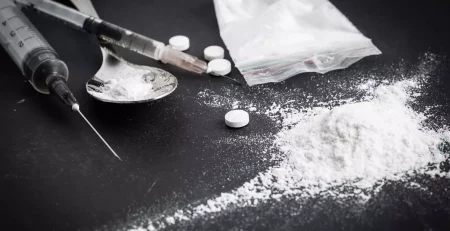The Benefits of Quitting Weed: A Personal Perspective
Reflecting on a Life Better Lived Without Mary Jane
Is your critical thinking process moving at a snail’s pace? Have you recently felt your motivation dwindling with a noticeable increase in fatigue? If so, you could be experiencing the haze that comes with habitually smoking marijuana.
Regardless of how innocent it seems, the long-term effects of smoking weed eventually manifest in all users with a dependence. Whether you’re smoking marijuana for the recreational impact, or rely on frequent cannabis use to combat a mental or physical health disorder, the mental and physical health benefits of quitting weed are undeniable.
If you’re contemplating quitting weed – and even if you deny the existence of marijuana addiction, this article demonstrates the benefits of getting a handle on your marijuana use disorder. So sit back, roll up (your sleeves that is!), and let’s dig into the benefits of quitting marijuana.
Get Effective Marijuana Detox Options – Call Now!
The Acceptance of Smoking Marijuana & Chronic Marijuana Users
Over the last 60 years, America’s love affair with smoking has ebbed and flowed, with the highest rates of abuse reported in the 1970s. But don’t be fooled – currently, marijuana is still the most widely used drug in the United States based on past-month studies.
Despite the widespread advocacy and acceptance of medicinal marijuana use, 89% of users report smoking weed for recreational effects, while 10.5% claim their marijuana use is for medical purposes, and 36.1% used it for a mixture of both. Regardless of whether someone is smoking weed for the recreational or medicinal effects, habitual use is still considered drug abuse.
The Rise of Recreational Marijuana Across the US

To put things in perspective – a 2022 study conducted by Gallup, a news outlet that’s been surveying individuals on alcohol, tobacco, and drug use since the 1940s – concluded that around 18% of Americans, roughly 78 million, reported smoking weed at least once. If we’re to believe this data is correct, this means that currently, more Americans have engaged in marijuana use than those who reported smoking cigarettes.
Out of these individuals, about 48 million reported regular marijuana use and would fall under the category of a potential drug abuse scenario. By these numbers, somewhere to the effect of 8 and 10% of Americans suffer from marijuana use disorder.
But before you celebrate this statistic by lighting one up, let’s take a closer look at how smoking weed became socially acceptable.
America’s Love Affair with Marijuana Use
How did an activity so damaging to your mental health and physical health become so accepted in such a short period? To be fair, what seems like a short period actually dates far back to the 17th century – before marijuana was even related to drug abuse.
When America was still in its infancy, the growth of cannabis was widespread thanks to the flourishing hemp industry. Many of the clothing men and women wore, in addition to the sails and ropes used on a multitude of massive American ships, were crafted from hemp. However, this all changed after the Civil War and America began relying on imports rather than domestically produced supplies.
From Reefer Madness to the Mainstream
During this period and into the dawn of the 20th century, marijuana was used in pharmacies and hospitals as a popular ingredient in several medications and was sold openly without a prescription. In 1910, Mexican immigrants introduced America to the widespread recreational use of marijuana, and by 1931, 29 states had outlawed the drug.
By 1937, marijuana was officially criminalized thanks to the Marijuana Tax Act. Widespread cases of different mental health disorders and other symptoms were reported as one of the primary dangers of the now-illegal drug – but it wouldn’t completely be stomped out.
The Return of Hemp (or the Hempire Strikes Back)
Hemp made a comeback during the 1940s when tariffs on import trades impacted the United States and the need for homeland production was needed once more. Parachutes, rip cords, and other materials were produced in mass quantities in pop-up factories that relied on 375,000 acres of new farmland that produced hemp.
This would be short-lived, however, as the 1950s saw a return to the government campaigns targeted to scare citizens into quitting weed – either by the onset of mental health issues or the heavy hand of the law.
Counter-Culture Sends Government Campaigns Up In “Marijuana Smoke”

A hard-charging group of hippies led by counter-culture figures like Timothy Leary, Ken Kesey, and other figures once again softened the public’s stance on cannabis smoking. Illegal drug use was once again a hot topic in the courtrooms – and living rooms – across America.
By the mid-1970s, eleven states decriminalized smoking cannabis. It seemed like the hippies’ efforts would finally push marijuana smokers over the hump, ushering in the utopia of weed legalization that stoners everywhere often fantasized about.
But not if Nancy Reagan had anything to do with it.
The War On Drugs and Return of Mandatory Minimum Sentences
In 1976, a small movement made up of groups of American parents led to the full-blown 1980s War On Drugs. Massive public campaigns were deployed, aimed at the young people of America – warning them against the dangers of substance use disorder and smoking pot.
Commercials replayed furiously during times when the youth of America was glued to their TV sets – demonstrating potential mental health issues and the irresponsible behavior one was in store for if they didn’t quit smoking weed. The “Three Strikes Rule” was deployed and many marijuana smugglers and dealers were handed life sentences – simple possession often resulted in prison time.
The War on Drugs: Changing of the Guard
America’s unrelenting onslaught on marijuana continued through the next administration, as George Bush Sr. continued to spearhead the war originally declared by his predecessor Ronald Reagan. The election of Bill Clinton would give pro-marijuana enthusiasts the push they needed to break through the stratosphere.
In 1996, California passed Proposition 215 – making it legal to possess and use marijuana for medicinal purposes. Since then, the movement continued to gain steam, ultimately leading to more states adopting similar legislation. Finally, in 2012 – Washington, Oregon, and Alaska decided to go fully recreational, legalizing the use of marijuana without a medical card.
As of now, 33 states have either fully legalized or at least decriminalized the use of marijuana. With talks looming regarding full-scale legalization at the federal level, it begs the question of whether the reported benefits of marijuana are worth the potential damage of marijuana dependence.
Legalized Marijuana Doesn’t Mean Safe Marijuana

Just because the laws have increasingly grown more tolerant of cannabis use doesn’t mean that it’s any safer to consume. Unfortunately, many new consumers may see it that way, especially after reading stories online of those who battled chronic conditions via cannabis consumption.
This isn’t to say that cannabis use doesn’t come with potential medicinal benefits – especially for those who suffer from painful or possibly fatal medical conditions. But it’s important to keep in mind that just because something may trigger potential relief, it doesn’t mean there’s not a downside to that.
Remember – these are the same health officials who approved the use of drugs like Oxycontin and Morphine. Do they relieve pain? Yes – they are incredibly effective at relieving pain. But users must always be aware of the harmful impact of anything they ingest. One must carefully weigh the pros and cons before engaging in any pharmaceutical therapy, but only after doing their due diligence in researching the substances involved.
Even for those who made the decision to smoke weed, it’s not too late to reverse the negative impact of cannabis use if you’ve discovered it’s not worth the downside. In the following section, we focus on the benefits of quitting your weed addiction, no matter how hard it may be to quit, and how to manage marijuana withdrawal. Yes, you read that correctly – marijuana withdrawal.
Get Accredited Treatment Programs at Icarus – Call Now!
Are There Benefits to Quitting Weed?
Many users are likely unaware of the benefits of quitting weed because they’re not aware of the negative impact it has in the first place. After going from an occasional smoker to someone with a cannabis use disorder needing treatment, it’s difficult to gauge the negative implications. After a certain point, it becomes a part of your daily routine and any feelings of physical discomfort or impact on your mental well-being becomes an afterthought.
Think of it like this: Marijuana causes mood swings – and in your early stages of smoking, you’d likely become so intoxicated you wouldn’t engage in certain tasks (like working, driving, etc.) However, after becoming a perpetual user, you’re stoned all the time. Any negative impact on your personal or professional performance goes sight unseen because now it’s ingrained into your daily life.
That said, the minute you stop smoking weed, you’ll notice a stark difference in things. These feelings may be negative as you experience withdrawal symptoms from marijuana. However, after quitting weed altogether and getting substantial sober time under your belt, you’ll begin to notice the positive implications of eliminating marijuana from your daily routine.
What Do You Mean Marijuana Withdrawal Symptoms?

At this point, you’re probably saying “Quitting weed doesn’t cause withdrawal symptoms.” This couldn’t be further from the truth. While marijuana may not cause severe withdrawal symptoms to the tune of what opioids cause, this doesn’t mean they don’t exist.
So, what are the cannabis withdrawal symptoms that manifest when you quit smoking weed?
The Most Common Withdrawals from Quitting Weed
Although quitting marijuana leads to positive effects on your physical and mental health, you must contend with the impact of withdrawal before reaping the benefits. When you quit marijuana, you’re likely to experience the following:
- Stomach pain
- Disturbance in sleeping patterns
- Mood swings
- Irritability
- Headaches
- Trouble concentrating
- Anxiety
- and more
Understanding this, there are additional benefits of quitting weed than just the cessation of withdrawal effects. Let’s take a look at the positive things that happen when you quit weed.
What Happens When You Stop Marijuana Use: The Benefits of Quitting Weed
As uncomfortable as the earliest days of abstinence might be due to the onset of marijuana withdrawal – the benefits of quitting weed far outweigh any temporary discomfort. These are just some of the things you can look forward to after quitting marijuana:
- A noticeable increase in energy.
- You regain your ability to focus for longer periods.
- The memory increases and becomes much sharper.
- Your mood is more balanced, leading to higher positivity levels.
- You may notice decreasing bouts of depression.
- Improvement in breathing and lung function.
- Overall healthier cardiovascular system.
- Increased endurance.
- Boost in sexual performance or increased sex drive.
Again, these are just a handful of the benefits coming your way when you quit marijuana. Everybody is different, so you may experience items not listed. The point is – you will notice an increase in your quality of life after you quit weed.
But how long does it take for these benefits to manifest? Let’s take a look at a timeline.
An Example Timeline for Quitting Marijuana

You’ll notice some of the initial symptoms only hours after quitting marijuana. However, these may be diminished due to the onset of withdrawal – but it’s only a temporary situation. Here’s what you can expect:
Days 1-3
You’ll notice an increase in anxiety and irritability. Small, insignificant events can trigger mood swings. However, during these first couple of days, your lungs are already beginning to repair and heal.
Days 3-8
Your anxiety and mood swings will increase until about day 5 or 6, at which point they’ll likely hit a peak. Depression might set in because the neurons in the brain are still misfiring. After a week the receptors begin returning to normal and you’ll experience a return to organic dopamine releases.
2 Weeks -1 Month and Beyond
After 2 to 3 weeks your receptors are back to 100%. You’ll be able to experience pleasure and depression should subside. The only thing that might persist is difficulty sleeping, which some clients report can last up to 6 months. However, this is easily remedied with all-natural solutions.
Up To 100% of Rehab Costs Covered By Insurance – Call Now!
Attend New Mexico’s Leader for Support to Quit Marijuana
Although it’s easier than quitting opioids, why suffer through marijuana detox alone if you don’t have to? Your odds are much better with the right addiction treatment team by your side. At Icarus Behavioral Health, we offer a personalized approach to recovery, catering to each client on a case-by-case basis.
Through evidence-based therapies, holistic practices, group therapy, and other cutting-edge treatment options. For more information about our program, including admission and insurance inquiries, contact us today so we can get to know you (or your loved one needing help) and offer options for support!











